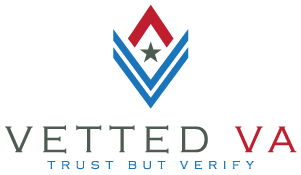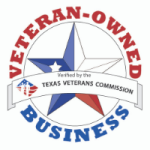In the wake of COVID-19, many homeowners — including veterans — entered mortgage forbearance to manage financial hardship. For months, one major question lingered: When will I be able to refinance or buy again?
On May 19, 2020, Fannie Mae and Freddie Mac issued temporary guidance clarifying those rules. These policies helped reopen the door for responsible homeowners who had paused payments during the pandemic — and they remain instructive today for borrowers exiting any form of forbearance.
Why This Guidance Matters for Veterans and Homeowners
During the pandemic, millions of Americans took advantage of forbearance programs that allowed mortgage payment deferrals without penalty. But for many veterans, this led to confusion when applying for new loans: lenders were unsure how to treat skipped payments or reinstated loans.
As Vetted VA professional Scott Schang explained, “The idea that you’d be locked out of financing for 12 months after forbearance created unnecessary pressure. These updates gave veterans and homeowners a path forward.”
The 2020 Temporary Eligibility Update Explained
Effective immediately (as of June 2, 2020):
-
Lenders could apply the new eligibility rules to both purchase and refinance applications already in process.
-
The policy would remain active “until further notice,” giving flexibility for ongoing COVID-related hardships.
These changes primarily applied to Fannie Mae and Freddie Mac–backed loans, but many VA lenders adopted similar internal standards to align with fair-lending expectations.
Can You Refinance or Purchase While in Forbearance?
Yes — if you did not miss any mortgage payments during forbearance.
In this case, you’re eligible for a purchase or rate-term refinance under the temporary rules. The lender must verify your payment history, usually through your loan servicer, if it isn’t reported on your credit.
“If you’re current, you’re eligible,” Schang emphasized. “But your lender must document that no payments were skipped.”
Important note: A mortgage payment is not considered late if it’s made by the last day of the month in which it was due (for example, a May payment made on May 31 is still “on time”).
What If You Missed Payments During Forbearance?
You’re not automatically disqualified. The key question is how the missed payments were resolved.
If your loan has been fully reinstated — meaning all skipped payments were repaid in a lump sum — you can qualify for a new loan, provided:
-
The reinstatement occurred before closing, and
-
The funds used to reinstate were from an acceptable source (not another loan or refinance proceeds).
However, under the Fannie Mae guidance, refinance funds cannot be used to repay skipped forbearance payments.
How Loss Mitigation Solutions Affect Eligibility
If your servicer offered a loss mitigation solution — such as a payment deferral, modification, or repayment plan — you can still qualify once you demonstrate a consistent payment history afterward.
Eligibility timeline examples:
-
Repayment Plan: Eligible after 3 consecutive on-time payments or completion of the plan (whichever comes first).
-
Payment Deferral / COVID-19 Deferral: Eligible after 3 consecutive on-time payments under the new arrangement.
-
Trial Loan Modification: Eligible after 3 successful trial payments.
-
Other Loss Mitigation Plans: Require proof of 3 consecutive on-time payments.
✅ Good news: You don’t have to repay all skipped payments to qualify — just show you’re back on track.
Documentation Requirements for Income and Employment
Because forbearance often coincided with job interruptions, lenders now take extra care verifying employment and income continuity. Expect the following:
-
Unemployment benefits cannot be counted as qualifying income.
-
Furloughed employees must be back to work before closing.
-
Lenders will perform a Verbal Verification of Employment (VVOE) right before funding — make sure HR is ready for that call.
“Communication is key,” Schang said. “If your HR or payroll team isn’t responsive, your loan could be delayed.”
Why Timing Matters: The Three-Payment Rule
For most post-forbearance borrowers, the three-payment rule is the bridge back to eligibility.
If you’ve made three consecutive, on-time payments under your current arrangement — whether standard payments or a modified plan — you can generally qualify to buy or refinance again.
That means a clear, documented history of stability matters more than the forbearance itself.
Expert Outlook on Interest Rates and Market Recovery
Even with market volatility, experts continue to project historically low interest rates over the long term. During the 2020–2021 recovery period, lenders priced in extra risk for forbearance-related uncertainty — but those spreads have since normalized.
“There are good things to come for borrowers who can wait,” Schang noted. “Patience and preparation will always pay off in mortgage planning.”
What Veterans Should Do Next
If you’ve been in forbearance or used a payment deferral, don’t assume you have to wait a year to refinance or buy again. Instead:
-
Check your loan status with your current servicer.
-
Document three consecutive, on-time payments.
-
Talk with a Vetted VA professional about eligibility and timing.
Lenders who understand VA guidelines — and the temporary Fannie Mae/Freddie Mac standards — can help you plan the best path forward.




